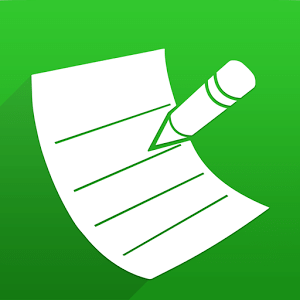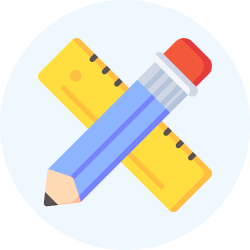Textbook Solutions: Our Nervous System | Eureka Plus Class 5: Book Solutions, Notes & Worksheets PDF Download
I. Choose the correct answer in each of the following questions
Q1: The nervous system is made up of the:
Ans: brain, spinal cord, and nerves.
Q2: The spinal cord is protected inside the:
Ans: vertebral column.
Q3: Motor nerves carry messages from the:
Ans: brain or spinal cord to various parts of the body.
Q4: A quick response to a stimulus is called:
Ans: a reflex action.
Q5: The lowermost part of the brain is the:
Ans: medulla oblongata.
II. Fill in the blanks.
Q1: The brain is protected by the _____________
Ans: skull
Q2: The _____________ of the brain regulates the heartbeat and breathing.
Ans: medulla oblongata
Q3: The _____________ of the brain controls movement and maintains the balance of the body.
Ans: cerebellum
Q4: The _____________ links the brain to the other parts of the body.
Ans: spinal cord
Q5: The space between the brain and the skull bones is filled with a _____________.
Ans: fluid
III. Copy the given flow chart in your notebook. Write the proper word in each of the boxes and complete the flow chart by adding short sentences in each box.
IV. Answer the following questions in one sentence.
Q1: Which part of the brain helps us to remember and learn?
Ans: The cerebrum helps us to remember and learn.
Q2: Explain the meaning of voluntary actions.
Ans: Voluntary actions are actions that we can control, like walking or reading.
Q3: What are involuntary actions?
Ans: Involuntary actions are actions that happen without our control, like the beating of the heart.
Q4: Name the five sense organs.
Ans: The five sense organs are eyes, ears, nose, tongue, and skin.
Q5: What is the thin membrane present inside the ear called?
Ans: The thin membrane inside the ear is called the eardrum.
 |
Download the notes
Textbook Solutions: Our Nervous System
|
Download as PDF |
V. Answer the following questions in three to four sentences.
Q1: What does the nervous system control?
Ans: The nervous system controls all functions of the body, including heartbeat, breathing, digestion, memory, speech, and movement. It helps us think, learn, remember, and react to different stimuli.
Q2: Differentiate between sensory and motor nerves.
Ans: Sensory nerves carry messages from body parts to the brain or spinal cord. Motor nerves carry messages from the brain or spinal cord to different body parts.
Q3: Explain how the human eyes see things.
Ans: When we look at an object, light passes through the lens in our eyes and forms an image. The image is converted into an impulse, which is sent to the brain through nerves. The brain processes this impulse and helps us see.
Q4: Explain how we hear sound.
Ans: Sound enters the ear and vibrates the eardrum. The nerves inside the ear convert these vibrations into impulses and send them to the brain. The brain processes the impulses to help us recognize the sound.
Q5: How do we know the taste of the food we eat?
Ans: The tongue has taste buds that sense the taste of food. The nerves connected to the taste buds send this information to the brain, which helps us know the taste.
VI. Write 4-5 sentences on the following topics.
1. Reflex action
Ans: A reflex action is a quick response to a stimulus without thinking. For example, moving your hand away when you touch something hot. It happens with the help of sensory and motor nerves. Reflex actions protect us from injuries.
2. Our sense organs
Ans: The five sense organs are eyes, ears, nose, tongue, and skin. Eyes help us see, ears help us hear, and the nose helps us smell. The tongue helps us taste, and the skin helps us feel. These organs send information to the brain, which helps us understand the world.
3. The human brain
Ans: The brain is the most important part of the body. It is protected by the skull and surrounded by fluid. The brain controls thoughts, memory, actions, and all body functions. It has three main parts: cerebrum, cerebellum, and medulla oblongata.
VII. Label the three main parts of the human brain and write only the words to highlight the functions of each of these parts. Ans: The human brain can be divided into three main parts, labeled as follows in the image:
Ans: The human brain can be divided into three main parts, labeled as follows in the image:
- Cerebrum - Responsible for higher cognitive functions like thinking, reasoning, emotions, and voluntary movements.
- Cerebellum - Regulates coordination, balance, and fine motor control.
- Brainstem - Controls basic life functions such as breathing, heartbeat, and consciousness.
HIGHER ORDER THINKING SKILLS
1. Chirag meets with a road accident. He injures his head as he was not wearing a helmet while riding a motorcycle. After the accident, he was not able to walk because he could not maintain his body balance.
Q: Which part of the brain could have been injured in Chirag’s accident?
Ans: The cerebellum could have been injured because it controls body balance.
2. A spider climbed onto Anu's hand. She quickly shook her hand and got rid of it.
Q: What kind of action helped Anu get rid of the spider?
Ans: Reflex action helped Anu get rid of the spider quickly.
FAQs on Textbook Solutions: Our Nervous System - Eureka Plus Class 5: Book Solutions, Notes & Worksheets
| 1. What is the main function of the nervous system? |  |
| 2. What are the two main parts of the nervous system? |  |
| 3. How does the nervous system communicate with the body? |  |
| 4. What role do reflex actions play in the nervous system? |  |
| 5. Why is the brain considered the control center of the nervous system? |  |


























